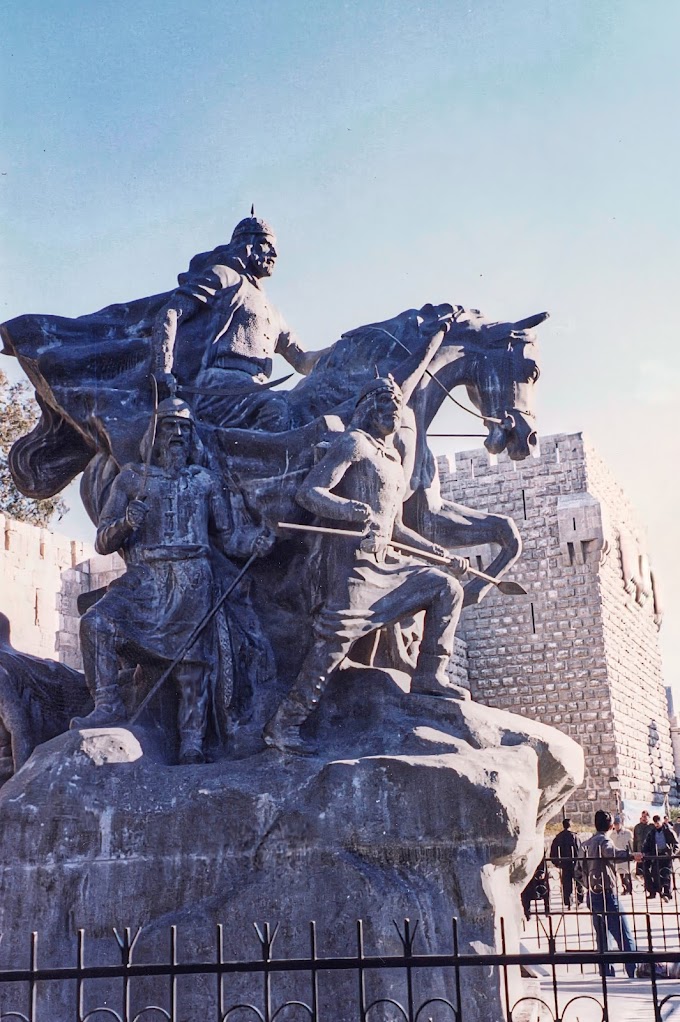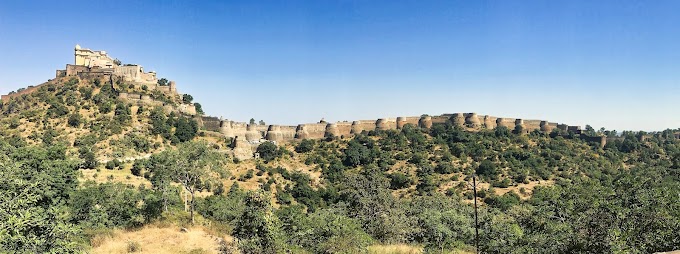 |
| Kumbhalgarh Fort |
Kumbhalgarh Fort: 25 Photos That Will Make You Want to Visit
Nestled in the Aravalli Hills of Rajasthan, Kumbhalgarh Fort stands as a testament to the architectural prowess and strategic brilliance of the Mewar rulers. Our visit to this magnificent fortress left us in awe of its grandeur and historical significance.
The Visionary Builder
Commissioned by Rana Kumbha in 1458 CE, Kumbhalgarh Fort took 15 years to complete[1][2]. The fort was designed by the renowned architect Mandan, who ingeniously incorporated the natural defences of the terrain into the structure[2][3].
Architectural Marvel
The fort's most striking feature is its massive wall, stretching an impressive 36 kilometres, making it the second-longest continuous wall in the world after the Great Wall of China[1][6]. This formidable barrier, often called the "Great Wall of India," boasts a thickness of 15 feet and is broad enough for eight horses to stand side by side[5][6].
Strategic Design
Kumbhalgarh's architecture reflects its primary purpose as an impregnable stronghold. The fort is perched 3,600 feet above sea level, offering a commanding view of the surrounding landscape[5][8]. Its seven fortified gateways - Arait Pol, Hulla Pol, Hanuman Pol, Ram Pol, Bhairon Pol, Nimboo Pol, and Paghda Pol - served as crucial defensive checkpoints[4].
A Sanctuary of Culture and Faith
Beyond its military significance, Kumbhalgarh Fort houses a remarkable collection of 360 temples within its walls, including 300 ancient Jain temples and numerous Hindu shrines[9]. This spiritual abundance showcases the religious diversity and cultural richness of medieval Rajasthan.
Historical Significance
Kumbhalgarh served as a refuge for Mewar rulers during times of danger, owing to its strategic location and formidable defences [3]. It also gained fame as the birthplace of the legendary Rajput warrior Maharana Pratap[3].
Architectural Highlights
The fort complex includes several notable structures:
1. Badal Mahal (Palace of Clouds): Perched at the highest point, offering panoramic views[6].
2. Katargarh (Ruler's Enclosure): The core citadel area[4].
3. Various palaces and residential quarters, showcasing a blend of Rajput and Mughal architectural styles[1].
 |
| Gates with Spikes to Prevent Elephants from Ramming |
A Testament to Time
Today, Kumbhalgarh Fort stands as a UNESCO World Heritage Site, part of the Hill Forts of Rajasthan[6]. Its well-preserved structures and imposing walls continue to captivate visitors, offering a glimpse into the glorious past of Rajasthan's Mewar kingdom.
Our visit to Kumbhalgarh Fort was truly a journey through time, allowing us to experience the grandeur of Rajput architecture and the strategic genius of medieval Indian rulers. This majestic fortress, with its rich history and awe-inspiring construction, remains an enduring symbol of Rajasthan's cultural heritage.
Photos Around Kumbhalgarh Fort
Citations:
[1] https://www.re-thinkingthefuture.com/articles/kumbhalgarh-fort-rajasthan/
[2] https://www.tutorialspoint.com/kumbhalgarh_fort/kumbhalgarh_fort_quick_guide.htm
[3] https://leverageedu.com/discover/general-knowledge/indian-history-kumbhalgarh-fort-history/
[4] https://indianculture.gov.in/forts-of-india/discovering-the-forts-of-india/kumbhalgarh-fort-political-and-spiritual-sanctuary
[5] https://beyonder.travel/india/west-central-india/kumbhalgarh-fort/
[6] https://timesofindia.indiatimes.com/travel/destinations/interesting-facts-about-rajasthans-kumbhalgarh-fort/articleshow/104019147.cms
[7] https://jaanekyadikhjaaye.com/kumbhalgarh-fort-rajasthans-iconic-hill-fort/
[8] https://www.veenaworld.com/blog/kumbhalgarh-fort-entry-fees-history-architecture-timings
[9] https://wanderingbong.com/blog/kumbhalgarh-fort-great-wall-india-undefeated-fort
[10] https://www.hinduismtoday.com/magazine/architecture-indias-astonishing-great-wall/
[11] https://www.yatrapur.com/kumbhalgarh-fort/
[12] https://www.udaipuronline.in/guide/kumbhalgarh-fort




























0 Comments